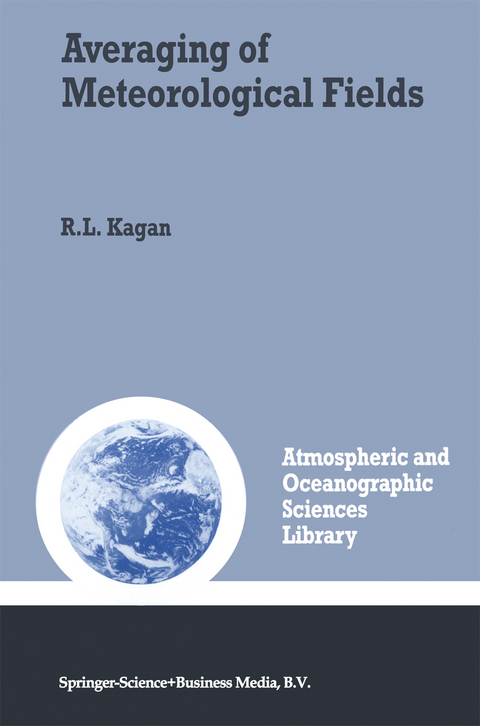
Averaging of Meteorological Fields
Springer (Verlag)
978-90-481-4936-0 (ISBN)
1. Introduction.- 1.1 Spatial and temporal averaging in meteorological problems.- 1.2 Some information on the statistical characteristics of meteorological fields.- 2. Statistical Description of Averaged Fields.- 2.1 Statistical structure of averaged data.- 2.2 Representativeness of point measurements with respect to averaged values.- 2.3 Influence of area shape on the representativeness of a point value.- 3. The Accuracy of Averaging Discrete Data.- 3.1 The accuracy of representing average quantities by discrete data.- 3.2 Approximate evaluation of the averaging accuracy.- 3.3 Optimal averaging of discrete data.- 3.4 Accuracy of averaging the characteristics of statistical structure.- 4. Problems of Averaging Some Meteorological Fields.- 4.1 The representativeness of precipitation data.- 4.2 Accuracy of zonal averaging of air temperature.- 5. Practical Aspects of the Spatial Averaging of Meteorological Fields.- 5.1 Methods of averaging meteorological fields and numerical applications.- 5.2 A brief description of the averaging algorithms.- 5.3 Comparative accuracy of some averaging algorithms.- Conclusions.- List of Symbols.- References.
| Reihe/Serie | Atmospheric and Oceanographic Sciences Library ; 19 |
|---|---|
| Zusatzinfo | IX, 281 p. |
| Verlagsort | Dordrecht |
| Sprache | englisch |
| Maße | 155 x 235 mm |
| Themenwelt | Mathematik / Informatik ► Mathematik |
| Naturwissenschaften ► Geowissenschaften ► Geologie | |
| Naturwissenschaften ► Geowissenschaften ► Hydrologie / Ozeanografie | |
| Naturwissenschaften ► Geowissenschaften ► Meteorologie / Klimatologie | |
| ISBN-10 | 90-481-4936-3 / 9048149363 |
| ISBN-13 | 978-90-481-4936-0 / 9789048149360 |
| Zustand | Neuware |
| Haben Sie eine Frage zum Produkt? |
aus dem Bereich


